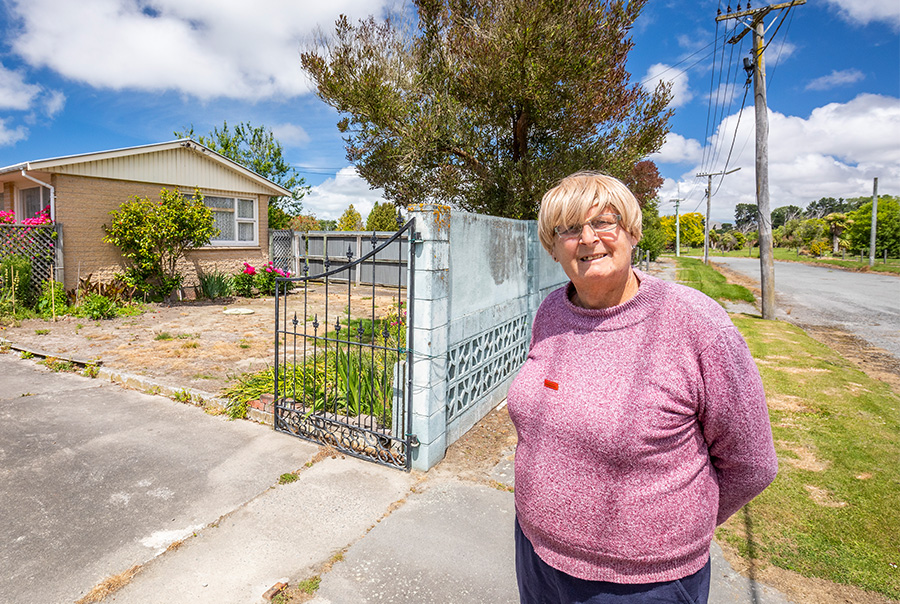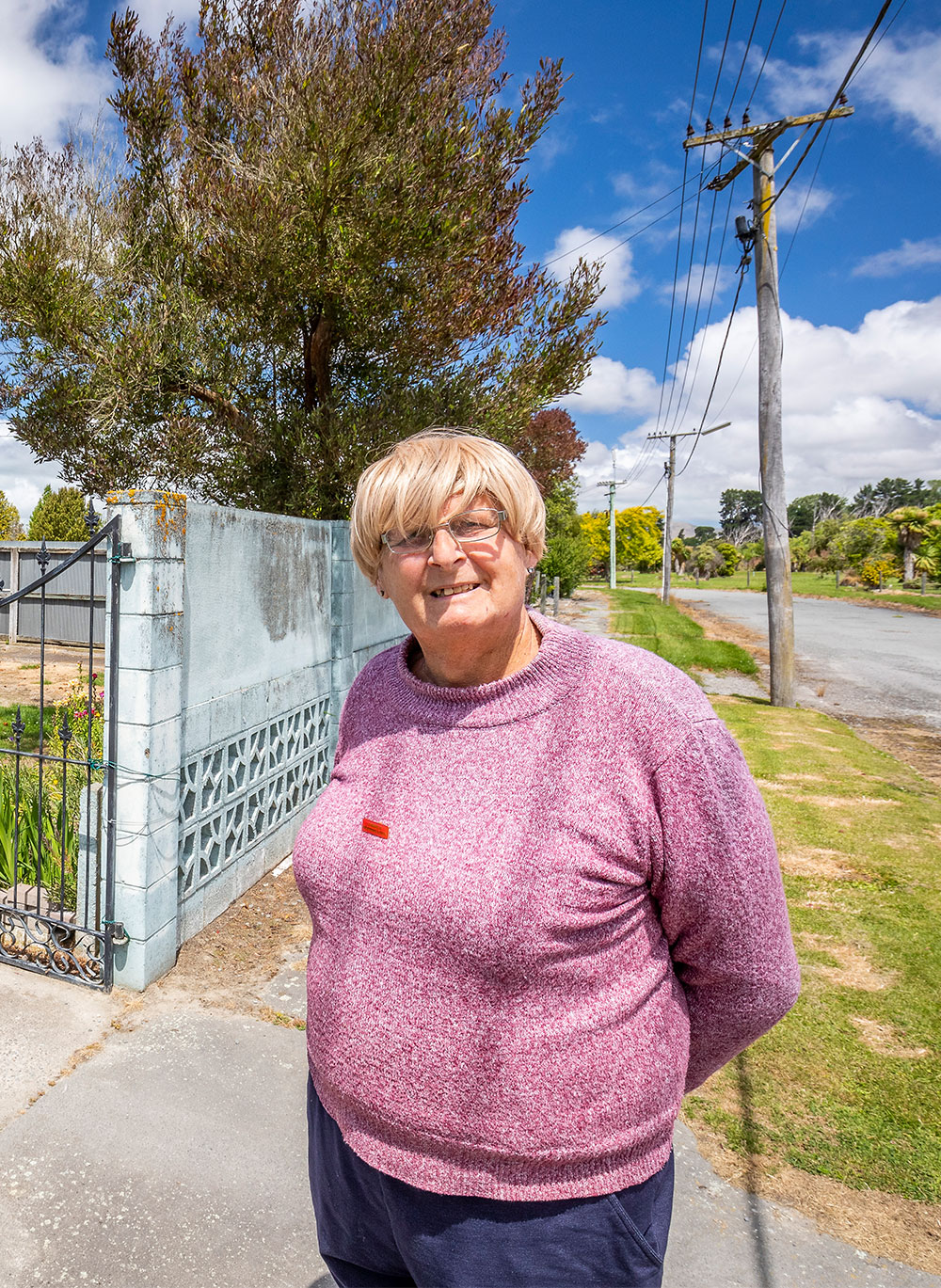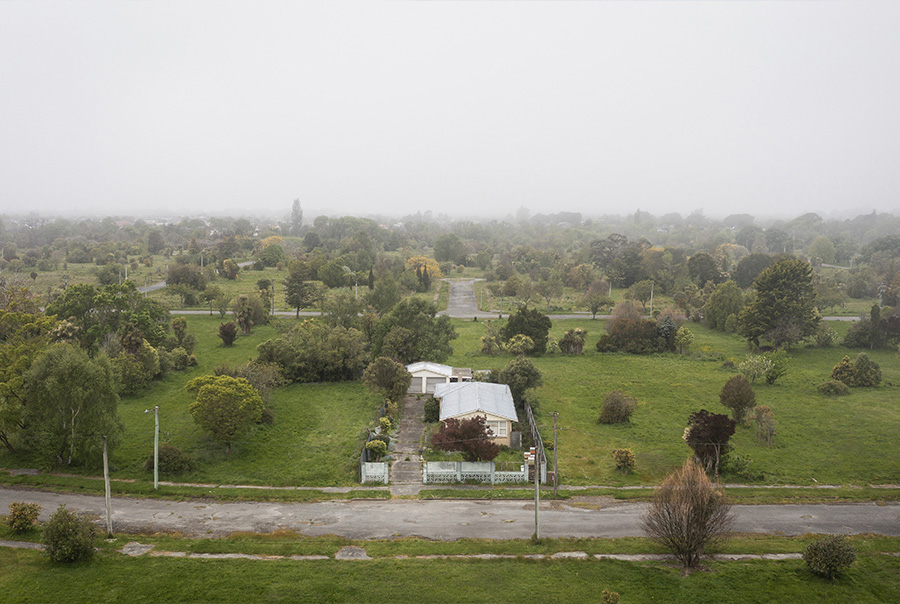

A lonely death at Horseshoe Lake
Charlie Mitchell ponders the mystery of the death of a lone woman, who remained the last resident in Christchurch’s red zone district. Who was she? Where did she come from? What compelled her to stay in the abandoned fields of the former suburbs? Mitchell digs into Frances Rawling’s last months living alone to piece together the remarkable story of an outsider living life on her own terms.
By Charlie Mitchell
Image: Frances Rawling, photographed in 2020.
They found her body on a cold day in June, inside the lonely house by Horseshoe Lake.
There was no forced entry. No sign of foul play. Its 80-year-old inhabitant had simply died.
A coroner swiftly rendered his verdict — heart disease, abetted by chronic renal failure — and closed the case. No inquiry needed. It was a normal death, at a normal age, in highly abnormal surroundings.
Frances Rawling lived in the ruins of an abandoned suburb in east Christchurch. She haunted the creeping wetlands, the swooping lake, the native forest bursting through fruit trees and garden shrubs; a lonely figure among the fading neighbourhood-watch signs, the grey roads crumbling into dust.
She owned one corner of this post-apocalyptic landscape; a tidy brick house, painted a pleasant yellow matching the heaving lemon tree by the front door. A snug little cottage in a deep, dark forest.
Rawling once had thousands of neighbours, who left one by one.
She didn’t join them. She carried on, mowing the lawns and trimming the trees, careful not to disturb the honeybees going about their business in hives beneath a bedroom window. She mooched around her house, free of technology and surrounded by memories. She distributed sunflower seeds to eager magpies from her back step and marvelled at the swelling population of wading birds.
The occasional dog walker would stumble across her house, and she would regale them with stories.
That’s what Rawling was doing when she was last seen alive in late April. Her body was found 50 days later. Precisely when she died — in April, May or June — is unknown.

Above: The last remaining house in the Burwood red zone.
The house had given it away, in the end. As autumn turned to winter, weeds crept through the cracks of the driveway and the lawns became overgrown. The drawn curtains were tinged with yellow. A boundary fence collapsed. The house had succumbed to its surroundings; submitted to the red zone. A dog walker hadn’t seen her in a while, and requested a welfare check.
This is where someone’s life story might usually end. But Rawling’s death has a curious epilogue. When most people die, a loved one will know within hours. It might take a week or two in complicated cases.
Rawling did not have a partner or children. She did not use the internet and only reluctantly used a cellphone. Her will, found amongst her belongings, was to-the-point — she wanted her modest estate bequeathed to the cancer charity CanTeen, and to be cremated with her grandmother.
Without a next-of-kin, the usual post-death process dragged. There was no one to receive the body or arrange a funeral. Nearly six months later, there had been no death notice, no memorial service, and no public comment on Rawling’s death. The old house decayed further; thieves raided the power lines for copper. The weeds grew ferociously, swallowing her garden.
It is tempting to make assumptions about Rawling’s life based on her death. A hoarder, perhaps. Someone on the margins. A forgotten person.
But Rawling defied simple categorisation. She had friendships spanning half a century. Friends fondly recalled her acts of kindness, and shared anecdotes about intense life experiences they’d shared. Even in her final years, Rawling had occasional visitors who traipsed through the red zone to see her.
And yet, the fact she went unseen for months, living in isolation within a major city, raises a question. Thousands of people left their communities and built new lives in the aftermath of a shared disaster.
Why didn’t Frances Rawling?


